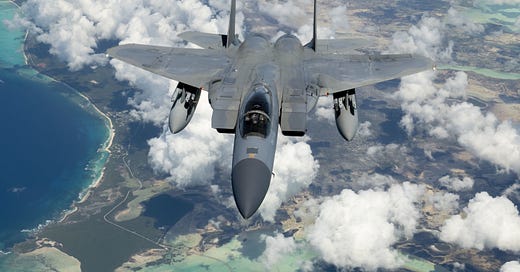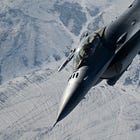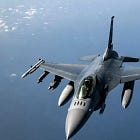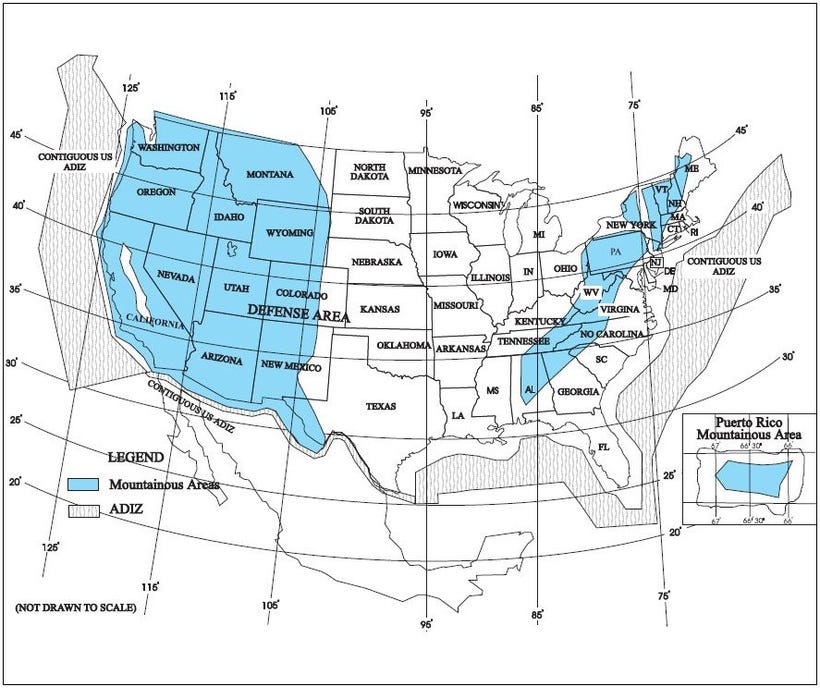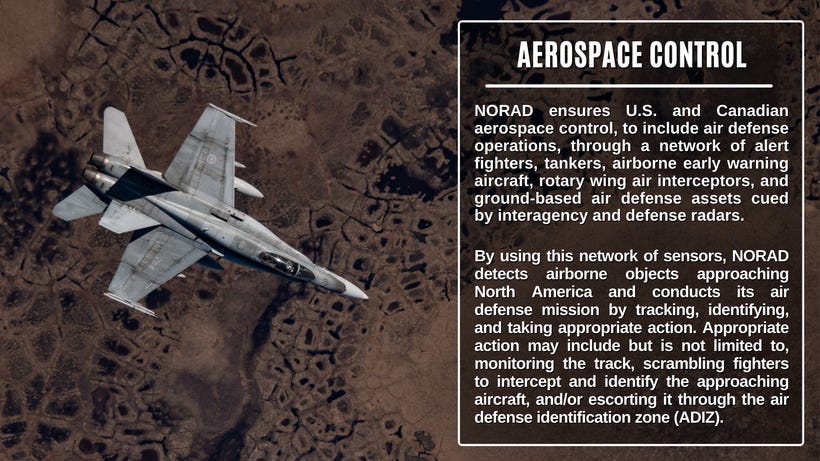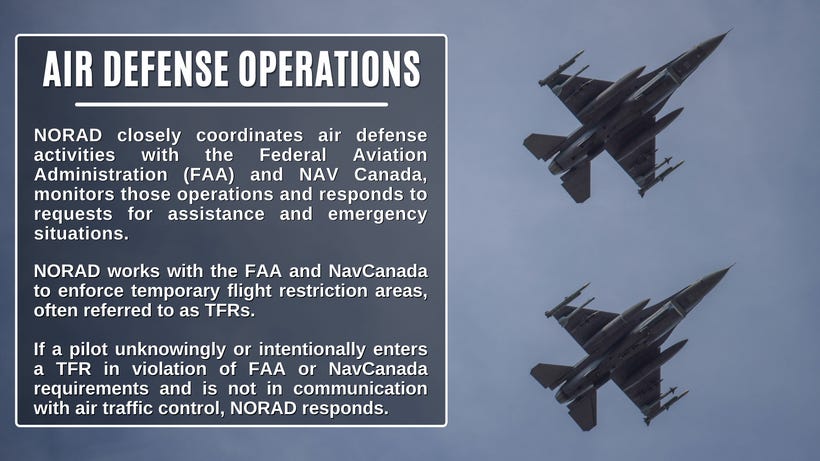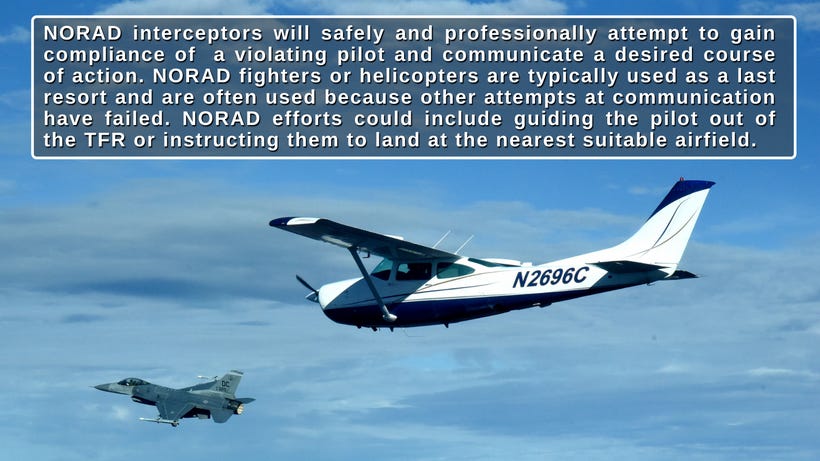NORAD Responds to Repeated TFR Violations Over Palm Beach, Florida
This incident marks over 20 “tracks of interest” entering the Palm Beach TFR area since the presidential inauguration on January 20, 2025.
FLORIDA - On March 8, 2025, at approximately 8:50 a.m. Eastern Standard Time, a civilian general aviation aircraft violated a Temporary Flight Restriction (TFR) over Palm Beach, Florida, prompting a swift response from the North American Aerospace Defense Command (NORAD). F-16 fighter aircraft from the Continental U.S. NORAD Region (CONR), based at Tyndall Air Force Base, Florida, intercepted the aircraft and safely escorted it out of the restricted airspace.
This incident marks over 20 “tracks of interest” entering the Palm Beach TFR area since the presidential inauguration on January 20, 2025, highlighting a troubling pattern of noncompliance among civilian pilots.
1st Air Force: "Heads-up, pilots! Another Temporary Flight Restriction (TFR) violation occurred this morning in the Palm Beach area. [NORAD Command] reminds everyone to please check NOTAMs before every flight."
NORAD: "Since the January 20, 2025 presidential inauguration, NORAD has responded to over 20 tracks of interest entering the Palm Beach, Florida TFR area."
General Gregory Guillot, Commander of NORAD and U.S. Northern Command (USNORTHCOM), emphasized the critical partnership between NORAD and the Federal Aviation Administration (FAA) in maintaining airspace safety, particularly in areas under TFRs. “Adherence to TFR procedures is essential to ensure flight safety, national security, and the security of the President,” Guillot stated.
Guillot noted that the excessive violations—over 20 in less than two months—suggest many pilots are neglecting to review FAA Notices to Airmen (NOTAMs) before flight, a mandatory step under 14 CFR 91.103. This has necessitated multiple NORAD fighter responses, including a notable March 1, 2025, incident where flares were used to signal three violators.
Guillot urged intercepted pilots to immediately contact 121.5 MHz (VHF Guard) or 243.0 MHz (UHF Guard), reverse course, and await instructions, warning that noncompliance could escalate to the use of force.
The FAA defines TFRs as temporary airspace restrictions issued via NOTAMs to protect persons or property, often linked to VIP movements like presidential visits to Mar-a-Lago, just 3 miles from Palm Beach International Airport (PBI).
These TFRs typically feature a 10-nautical-mile inner core and a 30-nautical-mile outer core up to 18,000 feet, as seen in historical South Florida restrictions. The FAA’s TFR list (tfr.faa.gov) provides real-time updates, yet the persistent violations since January 20, 2025, indicate a gap in pilot awareness or diligence.
Violations can lead to civil penalties, fines up to $100,000, or even criminal charges under 49 U.S.C. § 46307 if national security is compromised, underscoring the gravity of these incidents near a high-profile location like Mar-a-Lago.
Operated by the 1st Air Force under NORAD’s CONR, the F-16s deployed on March 8 likely originated from a nearby base such as Homestead Air Reserve Base, Florida, part of NORAD’s layered defense network of radars, satellites, and fighters.
The 1st Air Force, headquartered at Tyndall AFB, coordinates these air defense missions and issued a public alert via social media (@1stAF), urging pilots to “please check NOTAMs before every flight.” NORAD’s interception protocols involve approaching from behind, identifying the aircraft, and signaling compliance—steps executed seamlessly on March 8 without flares, unlike the escalated response on March 1.
This layered system ensures rapid detection and response, a capability honed through NORAD’s binational mission to safeguard North American airspace.
Palm Beach’s proximity to Mar-a-Lago has historically driven frequent TFRs, a pattern intensified during President Trump’s second term in 2025. The FAA notes that PBI operations face delays during these restrictions, with mitigation like gateway screening at airports such as Orlando International (MCO).
However, the high volume of incidents—over 20 since Inauguration Day—may prompt stricter FAA measures, such as enhanced pilot education or increased penalties, building on modernization efforts post a 2023 NOTAM system outage.
Aircrews are reminded to verify NOTAMs, especially in the National Capital Region and Mar-a-Lago areas, to avoid further intercepts by NORAD’s vigilant forces.

